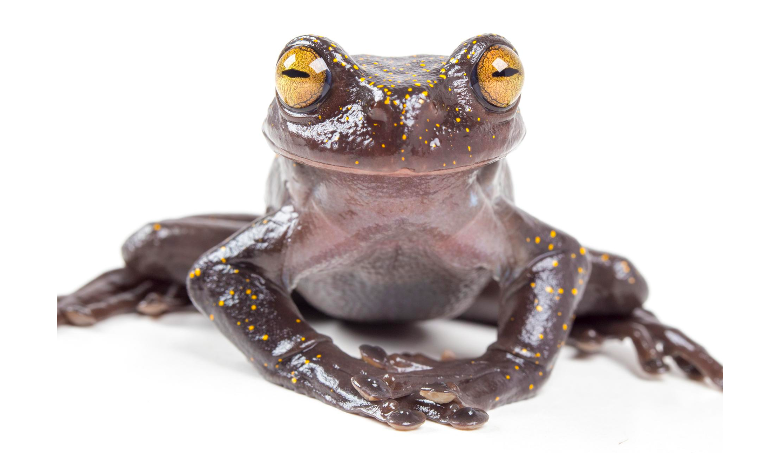
Photo: Gustavo Pazmiño, Bioweb Ecuador
By Tessa Cafritz and Monica Medina
Even as experts warn about the rapid pace of species extinction, there are discoveries that provide hope, wonder, and new insights as well. Early in January, National Geographic reported that biologists recently discovered a new species of tree frog —Hylosciirtus hillisi — that they named after a famous U.S. evolutionary biologist David Hillis, who is known for his work on the Hyloscirtus genus of tree frogs. Santiago Ron, an evolutionary biologist from the Catholic University of Ecuador, first found the new species during a two-week expedition in Cordillera del Cóndor, an isolated and rarely-studied region of the Ecuadorian Andes. This frog is remarkable because it has a claw on the side of its thumb that it uses to fight off predators or competitors of the same species.
This new frog is one of many species that specifically inhabit Andean cascading streams. Alex Achig, who was among those who found the species, said that they made their discovery after walking for two days in steep terrain, on a “tabletop” with a dwarf forest and rivers with black water. The frogs were well-camouflaged on branches of brown shrubs similar in color to their own.
- The researchers were able to spot only a few of these frogs at two nearby sites on the tabletop mountain, and although they do not know the size of the population, they think its numbers are likely low.
This new frog’s claw-like structure at the base of its thumbs is called a prepollex. This type of frog can puncture its own skin in order to use the claw—much like Wolverine! But it’s not the only frog with weird digits — there are four other related species with the same clawed thumb.
Why it matters: Though just discovered these frogs are already at risk of extinction. The dwarf forest in which they were discovered is threatened by a large-scale mining operation owned by a Chinese company. According to the World Land Trust organization, the Andes itself is one of the richest areas on the planet for biodiversity and faces threats from deforestation and mining. This special ecosystem is largely unexplored and still holds so many more species that have yet to be discovered. Which is why there is an increasing rallying cry among international environmental NGOs and scientists for a global effort to conserve 30% of the globe by 2030.
To Go Deeper: You can read the scientific paper describing the new species (and its wolverine like abilities) here. To learn more about the biodiversity of the Andes and how to help protect it, click here.

Photo: Gustavo Pazmiño, Bioweb Ecuador
January 23, 2019 » Andes, deforestation, discovery, Ecuador, endangered species, frog, mining


